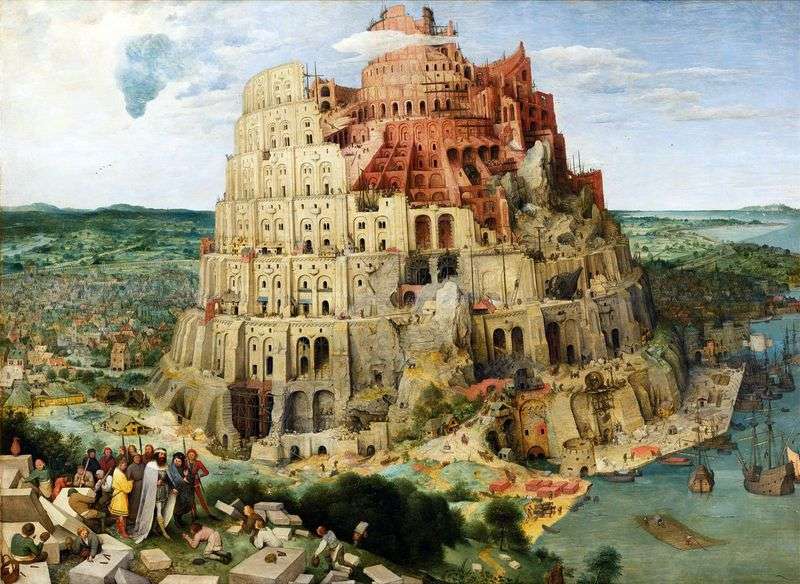
“The Tower of Babel” – a famous painting by the artist Peter Brueghel. The artist created several paintings on this subject. This work is based on the biblical allegory of human pride. The picture of Bruegel at the same time in its grandiose and together poetic form is filled with a sense of life. It is in the countless figures of builders, in the movement of wagons, in the landscape. It is characteristic that in the painting, written on the same plot earlier, the tower completely suppressed the human element.
Here, Bruegel not only avoids such an effect, but goes further – he, for whom nature was incomparably more beautiful than man, is now looking for the human element in it. The picture is based on the story from the First Book of Moses on the construction of the Tower of Babel, which was designed by people to reach its top of the sky: “We will build a city and a tower high up to heaven.” To subdue their pride, God mixed their languages, so that they could no longer understand each other and scattered them throughout the earth, so the construction was not completed. The moral of this picture is the frailty of all earthly things and the futility of mortal aspirations to compare with the Lord.
The Brueghel tower of Babel is in keeping with the traditions of the picturesque depiction of this biblical parable: there is an incredible scale of construction, the presence of a huge number of people and construction equipment. It is known that in 1553 Brueghel visited Rome.
In the painting “Tower of Babel” by Peter Brueghel, it is easy to recognize the Roman Colosseum with its typical features of Roman architecture: protruding columns, horizontal tiers and double arches. Seven floors of the tower are already built in one way or another, the eighth floor is being erected. The Tower of Babel is surrounded by building barracks, cranes, lifts, used in those days, stairs and construction forests. At the foot of the tower is a city with a busy port. The terrain where the Tower of Babel is built is very similar to the Netherlands by its plains and the sea.
The people depicted in the picture – workers, stonemasons – seem very small and reminiscent of their zeal of ants. Much larger than the figure inspecting the construction site Nimrod – the legendary conqueror of Babylon in the II millennium BC. e., Traditionally considered the head of the construction of the Tower of Babel, and his retinue in the lower left corner of the picture. Low, in the eastern manner, the bow of the stonemasons Nimrod is a tribute to the origin of the parable.
It seems interesting that, in Breughel’s opinion, in the failure that has befallen such a “large-scale project,” the language barriers that have arisen unexpectedly, and the mistakes made during the construction process, are guilty. At first glance, the huge structure seems to be strong enough, but on closer inspection it can be seen that all the layers are laid unevenly, the lower floors are either unfinished or are already collapsing, the building itself is leaning towards the city, and the prospects of the entire project are very sad.
 The Little Tower of Babel by Peter Brueghel
The Little Tower of Babel by Peter Brueghel Petite tour de Babel – Peter Brueghel
Petite tour de Babel – Peter Brueghel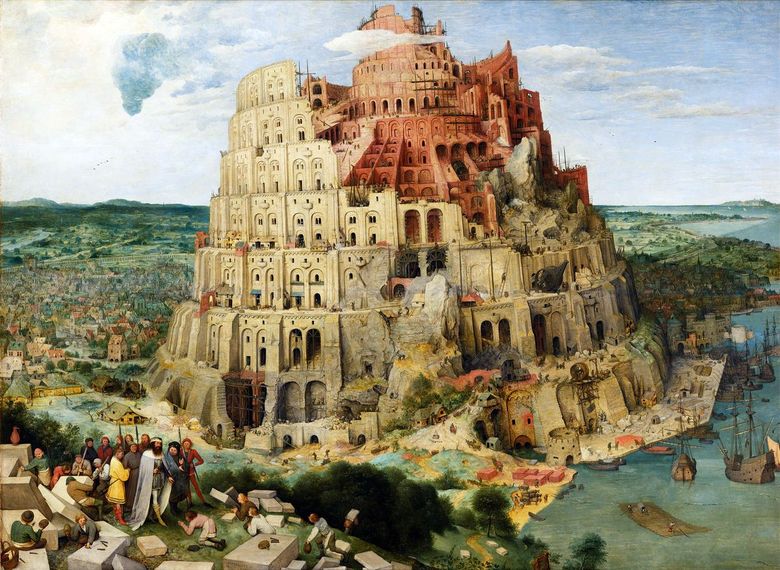 Tour de Babel – Peter Brueghel
Tour de Babel – Peter Brueghel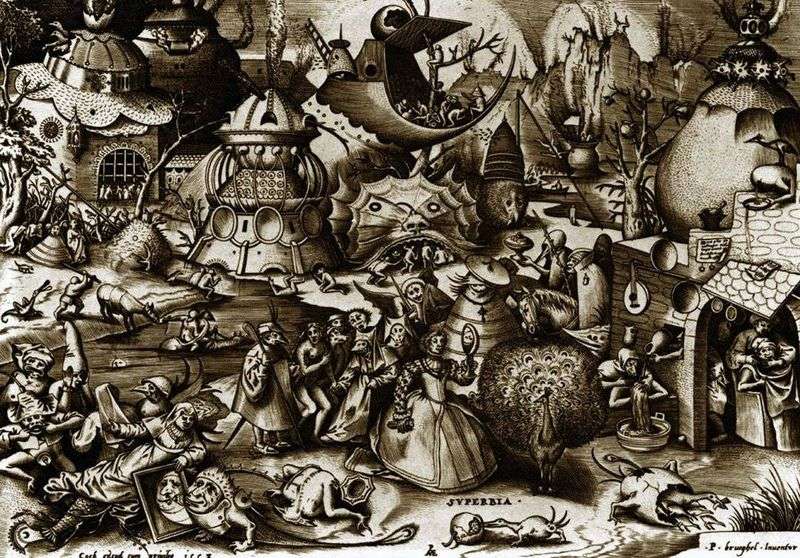 Pride. Engraving by Peter Brueghel
Pride. Engraving by Peter Brueghel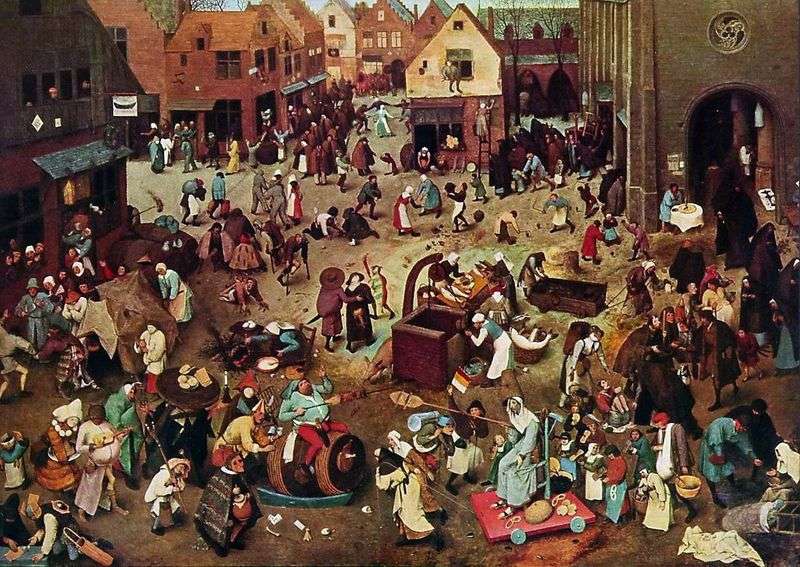 Carnival and Post by Peter Brueghel
Carnival and Post by Peter Brueghel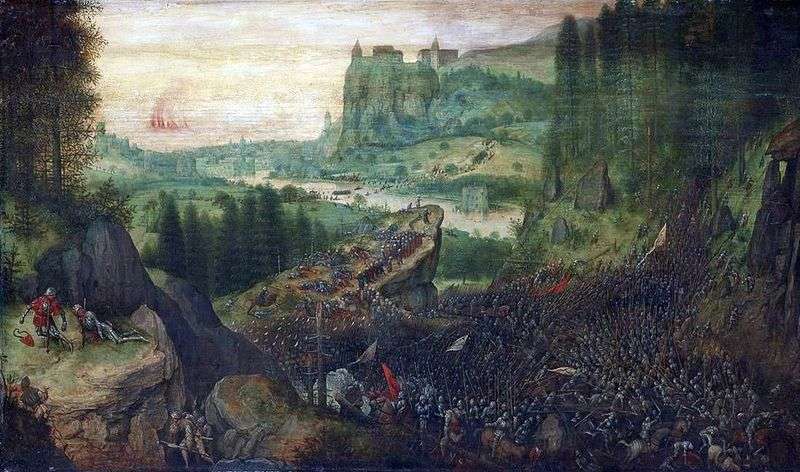 Suicide of Saul by Peter Brueghel
Suicide of Saul by Peter Brueghel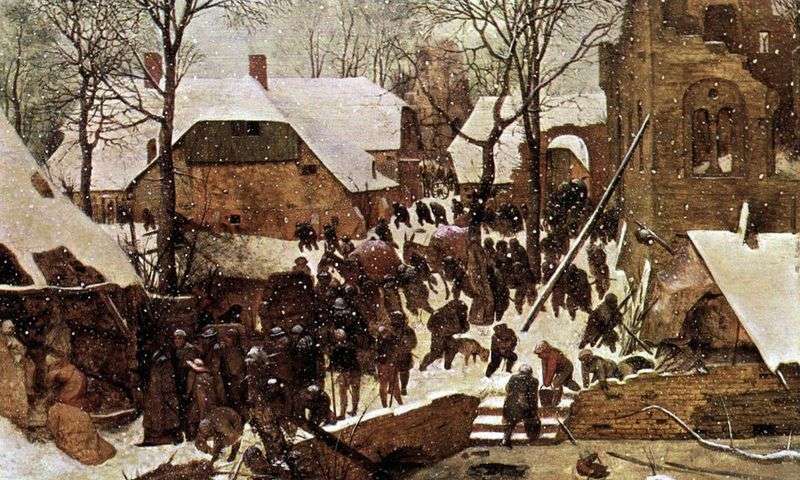 The Adoration of the Magi in the Winter Landscape by Peter Brueghel
The Adoration of the Magi in the Winter Landscape by Peter Brueghel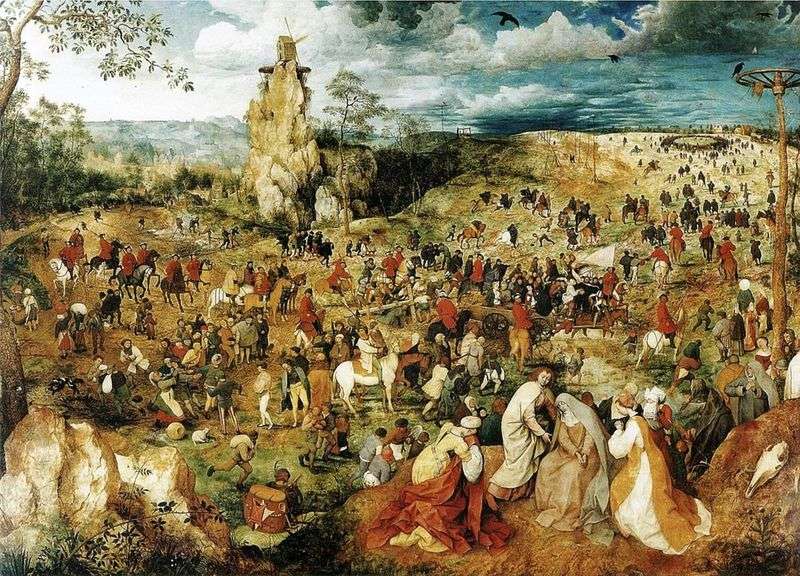 The Way to Calvary by Peter Brueghel
The Way to Calvary by Peter Brueghel